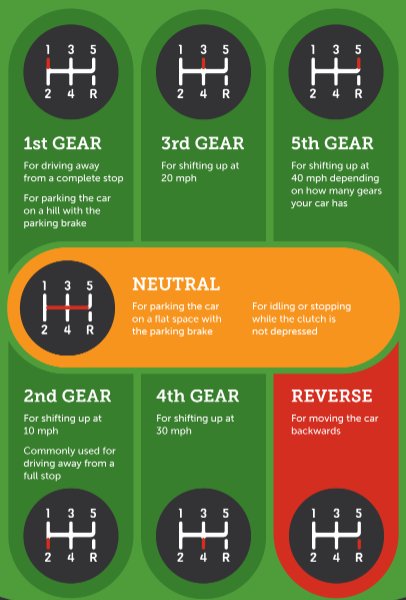
Master The Art: How To Know When To Shift Gears
When the engine roars, and the road stretches ahead, how do you know when to shift gears? The answer lies in finely-tuned instincts and awareness. Reading the subtle cues from your vehicle and the environment is key. A smooth transition between gears ensures optimal performance and efficiency. Join us as we delve into the art of knowing when to shift gears for a seamless driving experience.
How to Know When to Shift Gears
Introduction
Imagine you are driving a car. You have to pay attention to the road, the traffic, and the speed of your vehicle. One crucial aspect of driving a car is knowing when to shift gears. Just like in a car, in life, we sometimes need to shift gears to navigate smoothly through different situations. Let’s explore how you can recognize the signs that it’s time to shift gears in your life.
Understanding the Concept of Shifting Gears
Before we dive into the signs that indicate when to shift gears, let’s understand what shifting gears means. In a car, shifting gears involves changing the transmission to adapt to varying speeds and road conditions. Similarly, in life, shifting gears involves making changes or adjustments to cope with different circumstances or challenges.
Recognizing the Signs
Feeling Stuck or Unfulfilled
Do you ever feel like you’re stuck in a rut, doing the same things over and over again? If you find yourself feeling unfulfilled or lacking excitement in what you’re doing, it might be time to shift gears. Pay attention to your emotions and listen to your inner voice telling you that something needs to change.
Constant Stress or Overwhelm
Life can get busy and overwhelming at times, but if you constantly feel stressed and unable to cope with your daily responsibilities, it could be a sign that you need to shift gears. Look out for physical symptoms like headaches, fatigue, or trouble sleeping, as these could indicate that you’re pushing yourself too hard without taking a break.
Lack of Progress or Growth
Are you feeling like you’re not making any progress in your goals or personal development? When you hit a plateau and can’t see any growth or improvement in your life, it may be time to shift gears. Reflect on what’s holding you back and consider making changes to move forward and reach new heights.
Change in Priorities or Values
As we grow and evolve, our priorities and values can shift. If you find that what once mattered to you no longer holds the same significance, it could be a sign that you need to shift gears. Embrace these changes and realign your actions with your current values to lead a more authentic and fulfilling life.
Steps to Successfully Shift Gears
Reflect on Your Current Situation
Before you can make any changes, take some time to reflect on where you are in life. Consider what’s working well for you and what areas need improvement. Acknowledge your feelings and be honest with yourself about the changes you need to make.
Set Clear Goals and Priorities
Once you’ve identified the need to shift gears, set clear goals and priorities for yourself. Define what you want to achieve and the steps you need to take to get there. Having a clear roadmap will help you stay focused and motivated as you navigate through the transition.
Seek Support and Guidance
Don’t be afraid to reach out for support and guidance during this process. Talk to trusted friends, family members, or a mentor who can offer advice and perspective. Surround yourself with positive influences that can help inspire and motivate you to make the necessary changes.
Take Action and Embrace Change
Shifting gears requires action and courage. Be willing to step out of your comfort zone and embrace change. Take small steps towards your goals each day and celebrate your progress along the way. Remember that change is a natural part of life, and it’s okay to evolve and grow.
Knowing when to shift gears in life is a valuable skill that can help you adapt to new challenges and opportunities. By recognizing the signs, setting clear goals, seeking support, and taking action, you can navigate through life’s twists and turns with confidence and resilience. Remember, it’s never too late to make a change and steer your life in a new direction. So, listen to your instincts, trust the process, and embrace the journey ahead!
When to change gear in a manual car – full guide – speed, revs, sound, hills and economy explained
Frequently Asked Questions
When should I shift gears while driving?
It is important to shift gears when the engine reaches its optimal RPM range. Pay attention to the sound of the engine and the speed of the vehicle to know when to shift. Shifting too early can strain the engine, while shifting too late can lead to inefficient fuel consumption.
How do I know if I need to shift to a higher gear?
When the engine sounds like it’s working too hard or reaching a high RPM, it’s a signal that you may need to shift to a higher gear. Additionally, if you notice the speed of the vehicle increasing rapidly with little acceleration, it’s a good indication to shift up.
What are the signs that I should downshift to a lower gear?
Downshifting becomes necessary when the engine feels like it’s struggling, especially when climbing uphill or when you need more power for acceleration. If you notice the vehicle losing speed even though you’re pressing the gas pedal, it’s a clear indication to downshift to a lower gear.
Final Thoughts
Knowing when to shift gears is crucial for optimizing performance. Listen to the engine’s sound and feel the vehicle’s response to determine the right time. Pay attention to the RPM gauge and speed to anticipate when a gear change is needed. Practice and experience will enhance your ability to know when to shift gears effectively. Keep practicing to hone this essential skill.

